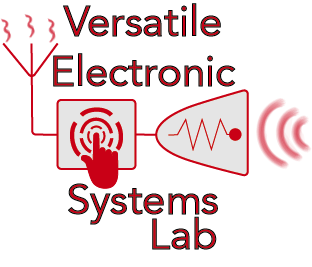ECE 4950/ECE 5960: Sensor Design
Professor El-Ghazaly created a new upper-level undergraduate/M.Eng. course on the design of sensor systems. The course focuses on the design of the transducers (i.e., sensors) and peripheral circuitry required to build a working sensor system that meets the needs of a given application. The course considers common specifications and tradeoffs, including sensitivity, specificity, dynamic range, resolution, power consumption, size, bandwidth, and cost. Students who have taken ECE 3030 (Electromagnetics) and ECE 3150 (Microelectronics) are encouraged to join! The many fun labs and project are highlighted below.
Students who have taken ECE 3030 (Electromagnetics) and ECE 3150 (Microelectronics) are encouraged to join! The many fun labs and project are highlighted below.
Lab 1: Black Box Sensors
Lab 2: Stealth
Lab 3: Speedometer
In this lab, students first investigate a bicycle computer to determine how it calculates the speed of the bike. Then, they proceed to measure the required dimensions of the wheel and write up Arduino code to make their own sensor systems subsequently.
Then, students construct their own speedometers using a Reed sensor, Hall sensor, magnetoresistance sensor, and handmade fluxgate sensor.
Lab 4: Baking
Lab 5: Flow
In this lab, students first determine the gas flow rates achieved by three different pumps in the lab.
Students then build their flow sensors with a heater + thermocouple pair at one end and a thermocouple measuring ambient temperature at the other. They calibrate the flow rate by observing the cooling of the heater under each of the three flow rate cases. Finally, they can test their sensor by calculating the flow rate generated by moving the sensor through air manually.
Lab 6: Greenhouse Gases
Lab 7: Autonomous Vehicles
Project (Fall 2023)














